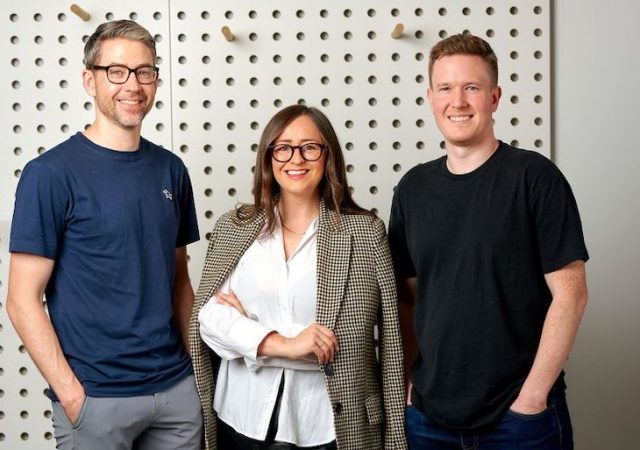We have all heard the story of the tortoise and the hare. It is an apt analogy for business growth. One starts off the race fast and carelessly while the other starts the race slowly and steadily. Business growth is yet another area of life where patience and consistency are key.
Every entrepreneur wants their idea to be the next big idea. Many first-time business owners begin their passion projects with the perception that success equates to reaching the finish line first — whether that’s being the first to IPO or getting acquired by a larger organisation.
Whatever a founder’s end goal may be, there is a lesson to be learned in the tortoise and hare analogy. A rigid focus on rapid growth can be detrimental, and can often result in failure. In fact, a staggering 9 out of 10 startups fail and a blinding focus on growth is often a contributing factor.
Growth isn’t everything
Historically, businesses that have downsized, were sold or went belly up suffered because they could not find ways to make it past the stage of enterprise maturity and become self-sustaining. They were unable to develop new and sophisticated processes necessary to meet contemporary business demands and it all boils down to their attitude towards growth. At the end of the day, it’s the customer that is in control of how successful your business will be.
Manically chasing growth at the expense of customer goodwill mortgages the future because growth that sacrifices the customer experience in any way, isn’t growth at all, it’s debt. However, there is a better way to grow — it is of utmost importance for a business to grow in a considered, sustainable way, that nurtures the relationship with its customers, rather than obsessing with getting over the line first.
The devil is in the data
How can you build a sustainable business? There’s an untapped growth opportunity hiding in plain sight: your customers. Businesses that are leading the pack are measuring factors like customer satisfaction through the effective use of data. Measuring customer satisfaction doesn’t have to be complicated or expensive. In fact, it’s fairly simple to incorporate customer satisfaction measurement into your current customer success strategy.
One of the most commonly used tools for measuring customer satisfaction is Net Promoter Score (NPS). It’s a typical benchmark company measure to evaluate how likely your customers are to recommend you to a friend. To calculate your NPS, you first have to survey your customers. The NPS is the typical answer to the question, “On a scale of 0 to 10, how likely are you to recommend the business to a friend?” The responses are then categorised into three groups: Promoters (9-10), Passives (7-8) and Detractors (0-6).
Collecting customer data through measurement solutions such as the NPS is an invaluable exercise. Measuring customer satisfaction allows you to gauge your customers’ emotional responses enabling you to easily identify unhappy customers. Addressing these problem areas is worth massive amounts when it comes to measuring return-on-investment (ROI) and it also boosts loyalty and therefore retention.
Customer retention is what separates the leaders from laggards. You can spend large sums of money to acquire customers but if they don’t stick around, they end up costing the business a lot more. Without customers, you simply don’t have a business.
Recommendations make or break
Another way to boost retention and foster loyalty is to keep your ear to the ground. Customers today are more independent, more impatient, and less trusting of businesses. They share their dissatisfaction widely and loudly, and they have a wide variety of options to choose from before showing loyalty to a brand.
Recommendations from friends and family are incredibly valuable to customers. According to Nielsen’s Global Trust in Advertising Report, 83 per cent of respondents said they trust recommendations from family and friends more than any other form of advertising. This means that even if a business does everything right — from the design of its logo to creating targeted content like blog posts — one customer’s bad experience with a brand could cost it the loss of new business. In fact, customers are more likely to talk about a bad experience with a brand than a good one and they tell almost 3X as many people when it happens.
With the proliferation of social media, customers can just as easily share recommendations as well as negative reviews with entire networks at the press of a button. Businesses that collect customer feedback and analyse it can not only identify red flags and intervene to prevent poor reviews but can also engage with happy customers to build loyalty.
Ultimately, aggressive, untimely, or poorly managed growth can hurt your business and even lead to its failure. Instead, business leaders must shift their focus to the customer by measuring customer satisfaction and analysing data to address customer pain points. Today’s customers aren’t as forgiving. After a negative experience, they won’t hesitate to move to the next brand and will be sure to let their friends and family know about the switch. Businesses wanting to succeed must take a tortoise-like approach and make steady investments towards their customer needs if they want to achieve long, lasting growth that meets their expectations.
Shahid Nizami is HubSpot’s Managing Director APAC.




















Trending
Daily startup news and insights, delivered to your inbox.